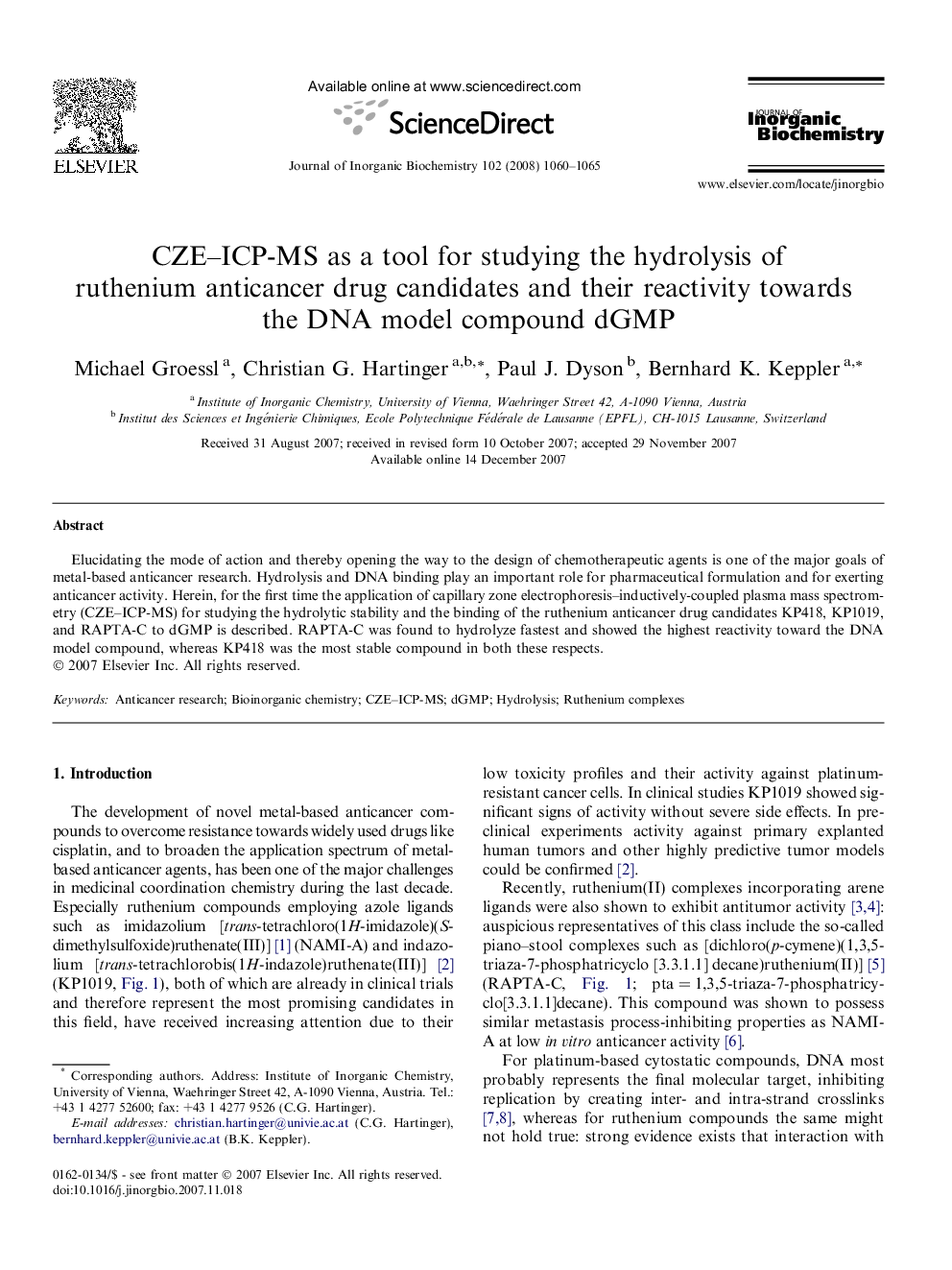| Article ID | Journal | Published Year | Pages | File Type |
|---|---|---|---|---|
| 1316581 | Journal of Inorganic Biochemistry | 2008 | 6 Pages |
Abstract
Elucidating the mode of action and thereby opening the way to the design of chemotherapeutic agents is one of the major goals of metal-based anticancer research. Hydrolysis and DNA binding play an important role for pharmaceutical formulation and for exerting anticancer activity. Herein, for the first time the application of capillary zone electrophoresis–inductively-coupled plasma mass spectrometry (CZE–ICP-MS) for studying the hydrolytic stability and the binding of the ruthenium anticancer drug candidates KP418, KP1019, and RAPTA-C to dGMP is described. RAPTA-C was found to hydrolyze fastest and showed the highest reactivity toward the DNA model compound, whereas KP418 was the most stable compound in both these respects.
Related Topics
Physical Sciences and Engineering
Chemistry
Inorganic Chemistry
Authors
Michael Groessl, Christian G. Hartinger, Paul J. Dyson, Bernhard K. Keppler,
